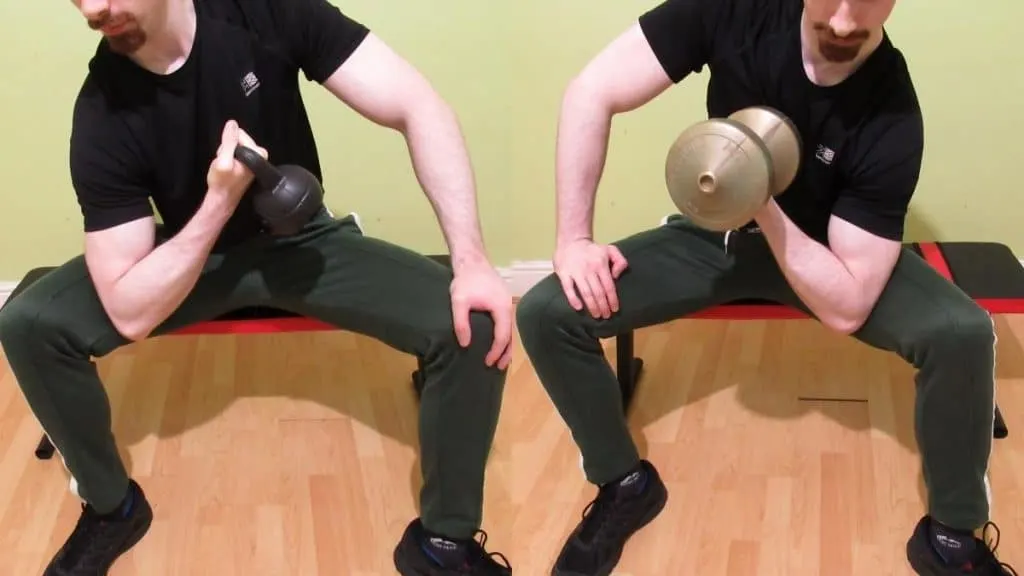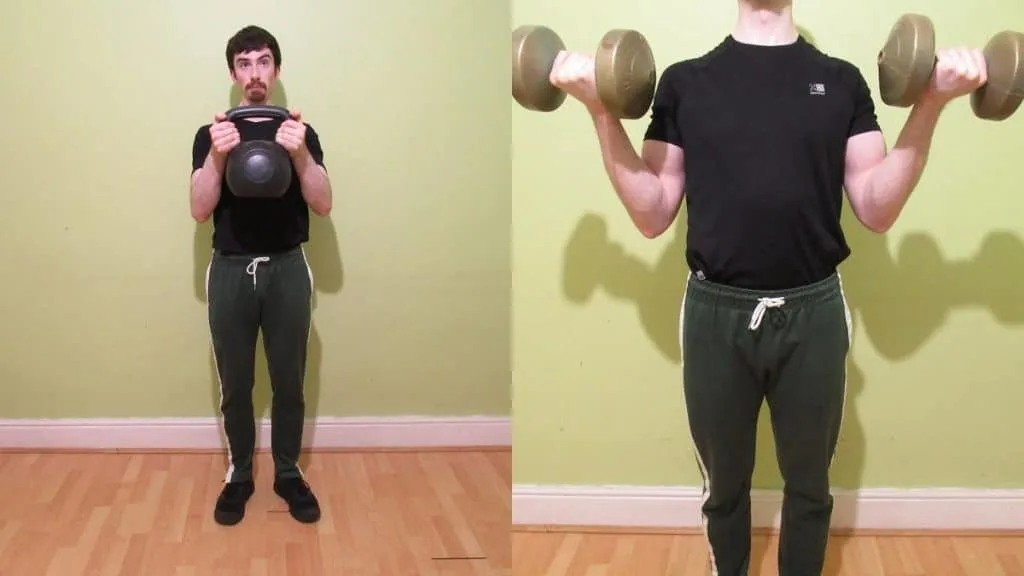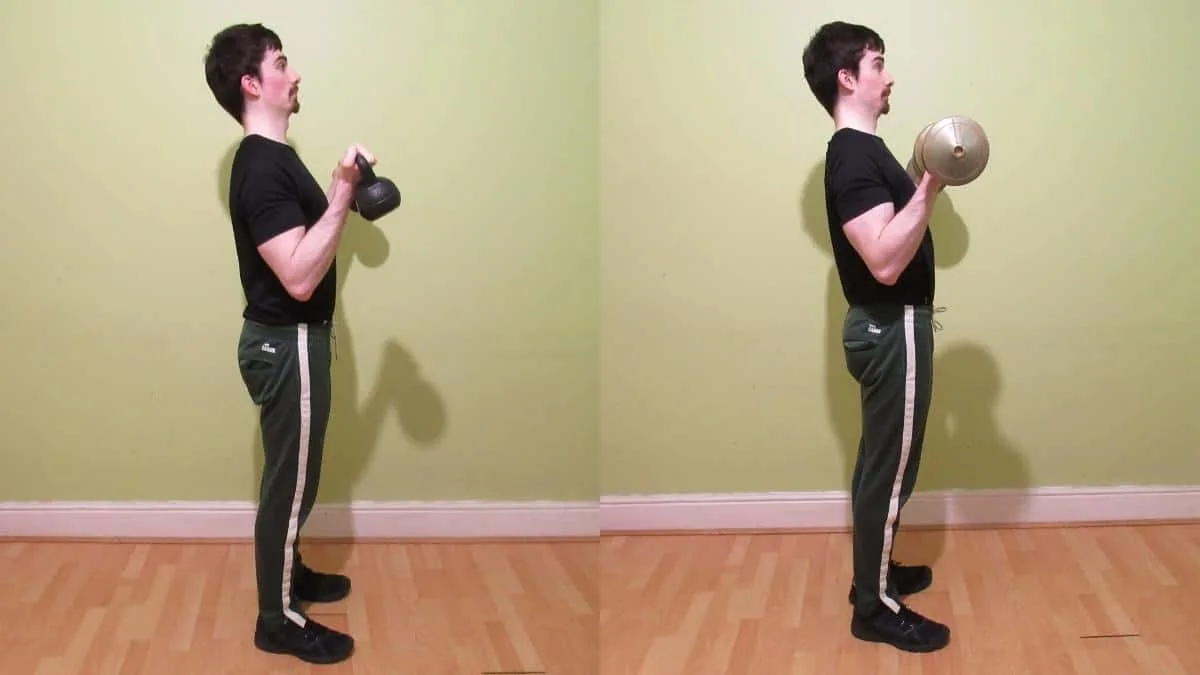Is the kettlebell biceps curl more effective than the DB curl?
If you’ve ever pondered this question or tried our bicep kettlebell workout routines, then you’re in the right place. We’ll explain the difference between kettlebell curls and dumbbell curls and tell you which one is most effective for gaining bicep muscle mass.
Let’s get into the comparison.
Kettlebell curls vs dumbbell curls: The main differences
- Kettlebell curls may provide a slightly stronger muscle contraction than dumbbell curls.
- Kettlebell curls require more forearm exertion to keep your wrists straight.
- Dumbbells are easier to supinate and thus may arguably provide a stronger contraction themselves.
- You can typically lift a bit heavier with dumbbells.
- Dumbbells tend to increase in more manageable weight increments.
Related Exercise: Reverse kettlebell curl
Which one is best for muscle growth?

Both drills can build slabs of bicep mass, that’s for sure.
On the one hand, you could argue that kettlebell curls provide more potent muscular contractions because the weight is further away from your biceps when you flex them at the top of the rep. [1] This means that your biceps have to contract harder in order to lift the weight at the final part of the concentric.
Conversely, you could actually make a case for dumbbell curls providing better contractions because they’re much easier to supinate. [2] And by supinate, I don’t just mean curl with an underhand grip. I’m on about turning your pinky finger as far as you can to maximally shorten and contract your biceps.
In terms of bicep activation, I personally can’t tell much difference between the movement. Most lifters, especially those with a bodybuilding background, will likely get better bicep gains from lifting dumbbells, seeing as that what they’re most used to. But if you’re a kettlebell fanatic, then there’s no reason why you can’t achieve similar results if you put in the work.
As for the forearms, kettlebells are definitely superior because you need to flex your lower arms intensely in order to keep your wrists straight. That is, of course, presuming that you want to keep your wrists straight. You can actually relax your forearms and let the kettlebell pull your wrists back slightly if you want to keep more of the tension on your biceps.
Which one is better for gaining strength?

Kettlebell curls will naturally have more strength carryover to other kettlebell drills simply because you’re getting used to holding kettlebells.
It works the same way with dumbbell curls.
However, dumbbells tend to increase in much smaller weight increments than kettlebells. This makes it far easier to gain strength on a regular basis, which in turn means that you’ll be able to overload your biceps with heavier resistance and gain more size.
Of course, if you or your gym has plenty of kettlebells, then you can also gain strength just fine by ditching the dumbbells.
You can also do crush curls with kettlebells if you want to strengthen your gripping muscles and only have access to a single kettlebell.
Kettlebell curls vs dumbbell curls: The verdict

Both exercises are very similar, hence why so many lifters want to compare them and suss out the differences. In the end, dumbbell curls slightly edge out kettlebell curls because the majority of the gym-going population is more accustomed to lifting dumbbells and can thus provide their biceps with a better workout by using them.
Dumbbells also have finer increments than kettlebells in general, and so they’re naturally better for long-term strength gains.
I hope that you enjoyed this quick kettlebells curls vs dumbbell curls comparison. As you can see, both exercises have their benefits and drawbacks, but the regular curl just edges it because dumbbells are a more convenient, lifter-friendly training tool to use for curls.
References
- Mechanics in Exercise: Levers. (2021). ExRx. https://exrx.net/Kinesiology/Levers
- Shahid, S. (2020, October 29). Pronation and supination. Kenhub. https://www.kenhub.com/en/library/anatomy/pronation-and-supination

